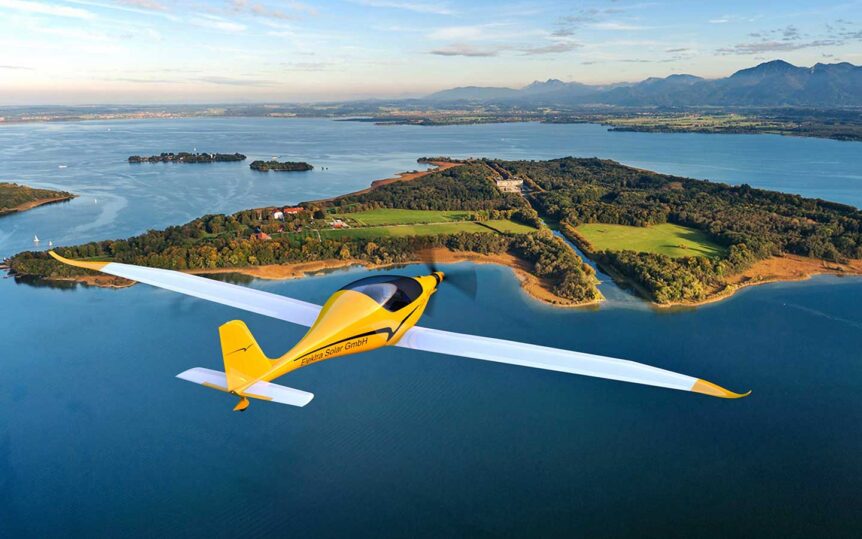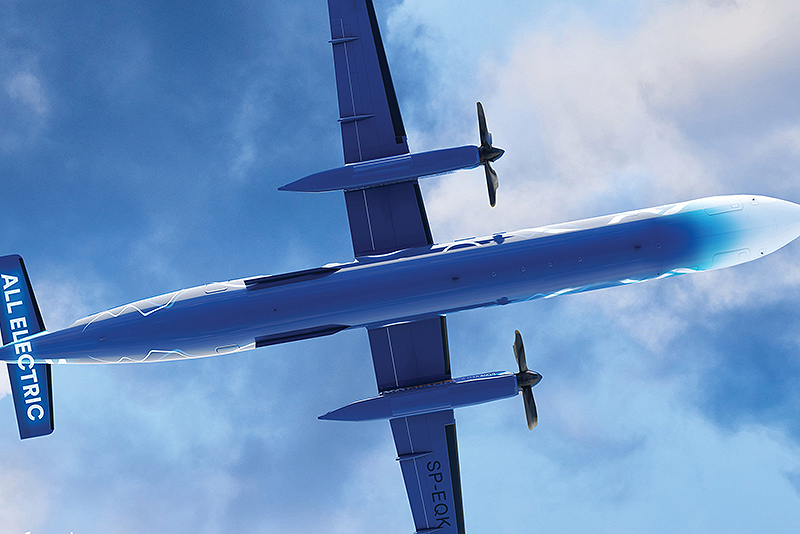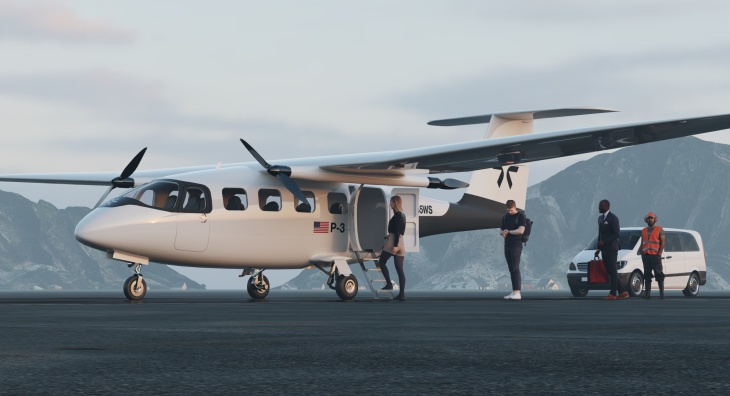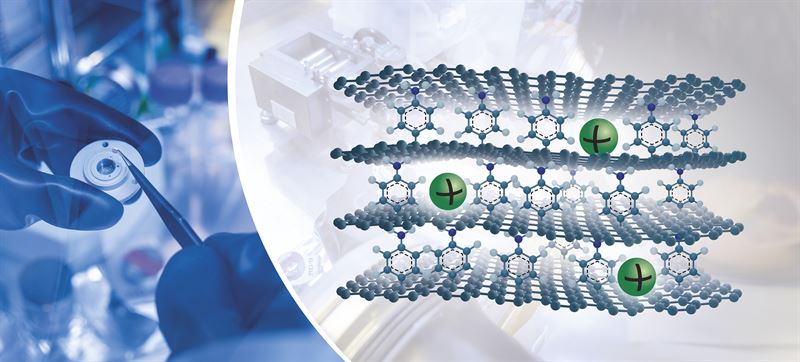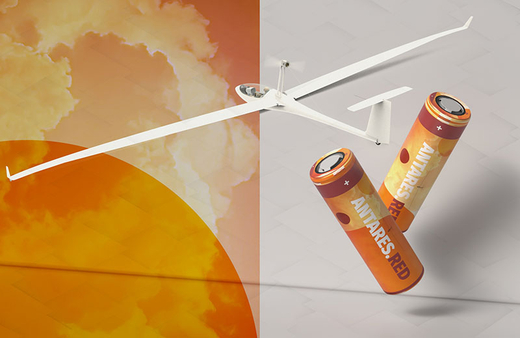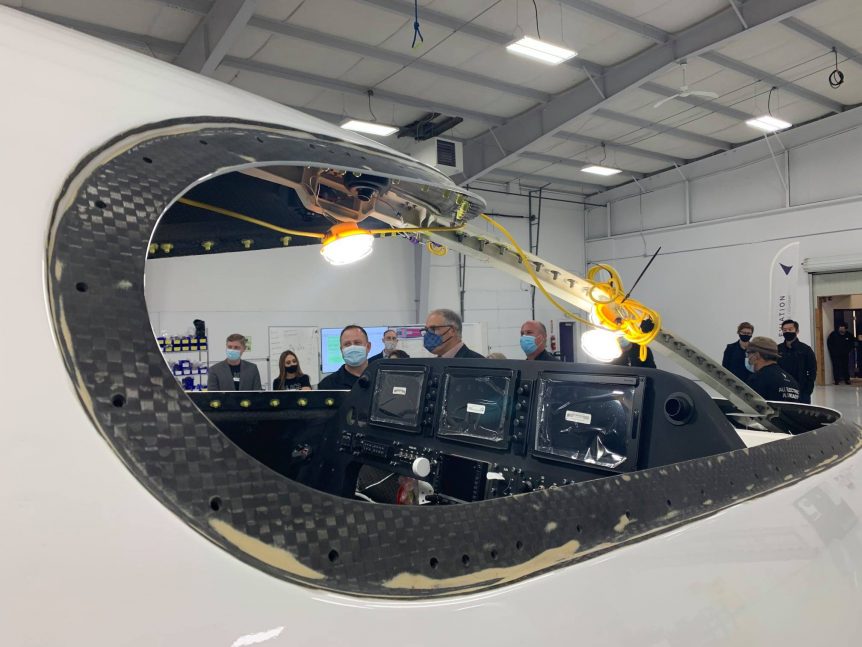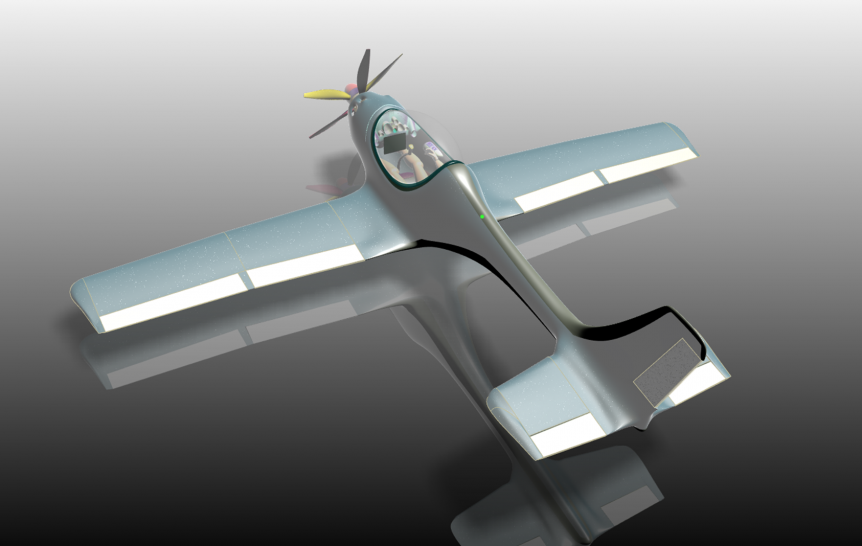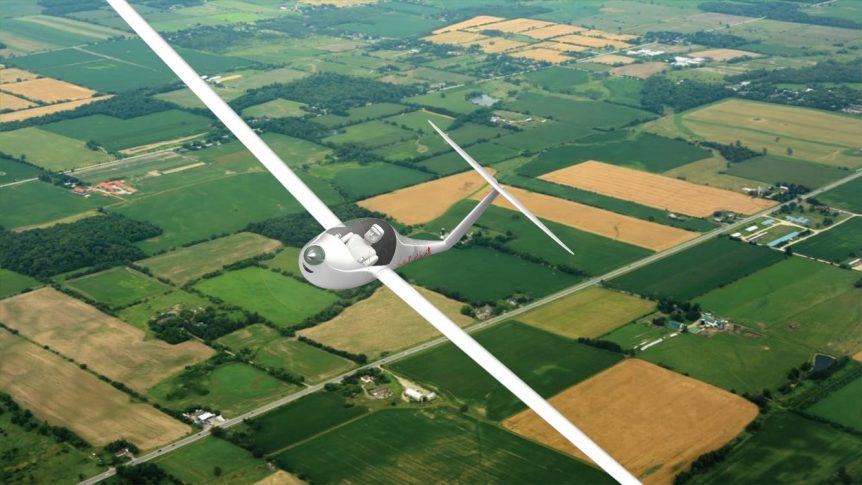Elektra Solar introduced its Trainer, a new two-seat craft, at this year’s Aero Expo. As reported here last year, the airplane features side-by-side seating to facilitate training, doubtless enhanced by the low noise level – 50 dB, according to the company. Based on German ultralight standard LTF-UL 2020. Compared to a “moderate rainfall noise,” the low sound level allows operation in noise protected areas and should enable easy communication between student and instructor. Safety and Performance With safety in mind, Calin Gologan, the plane’s designer, chose Geiger Engineering’s HPD50D dual motor. Putting out 50 kilowatts continuously or 70 kW peak power, the 16 kilogram (37.3 pound) unit can run on either or both rotors. Both independently controlled motors drive a 1.75 meter (5.74 foot) controllable-pitch propeller at up to 2,600 rpm. If one motor fails, the remaining unit can maintain a climb rate of 1.5 meters per second (295 feet per minute). With both motors running, the craft can climb …
Group 14 Gets a Push from Porsche
We covered Washington Governor Jay Inslee’s visit to the Group 14 Technologies battery plant in Woodinville last year. Now the Group is getting attention from Porsche, among other funders. The startup company announced raising $400 million from investors including the Teutonic automaker. According to Reuters, part of those funds will be used to build a second battery materials plant in eastern Washington State. The company is now valued at over $1 billion, money which will help expand battery materials production for the silicon-lithium cell market. Silicon is a desirable material in batteries, capable of storing more energy than lithium or other metals. It has a major drawback, though. In expanding and contracting during charge-discharge cycles, it eventually deteriorates, crumbles, and brings the battery’s usefulness to an end. Dr. Yi Cui of Stanford University has tried various methods over the years to prevent such crumbling. His firm, Amprius, has developed a silicon nanowire anode that enables a battery with 450 Watt-hour …
ZeroAvia, Mitsubishi, and Alaska Airlines Power Up
A Different Type of Kitplane Green Aeronautics are moving beyond small beginnings into grander realms through ZeroAvia, Mitsubishi, and Alaska Airlines. Gabriel DeVault has flown two different electric airplanes of his own, a converted EarthStar Thundergull and a Sonex eXenos (which seems to be his daily commuter between Hollister, California and his home in Watsonville). Both have been featured prominently in his YouTube channel and your editor has written about them for Kitplanes magazine. Now, Gabriel is working on a different type of Kitplane at a much large scale. Gabriel managed research and design for the motor and related systems on the Zero electric motorcycle. The original unit has gone through several upgrades, and is now seen in variants from 27 to 110 horsepower. The company sold over 4,000 units last year in 30 countries including the United States. They look to build at an accelerated rate, hoping to double sales every year. He has taken that expertise to larger …
EmbraerX and Pyka Team Up
Accelerating Innovation Embraer, a major Brazilian airframe developer, and Pyka, an Oakland, California-based autonomous agricultural aircraft builder, are teaming up. They hope, “To accelerate the future of autonomous aerial agriculture operations.” Beyond that, Pyka is expanding into regional air transport which could open 5,000 U. S. airports to usually unserved areas. Pyka has flown autonomous agricultural aircraft in New Zealand for over two years, demonstrating high efficiency and economy in aerial application, or crop dusting (or spraying) as it’s historically called. Apparently, the island nation’s Part 101 and 102 civil aviation licensing requirements are receptive to such flight. According to Dan Grossman, Pyka’s new President (and formerly of Zipcar, Ford and Maven), Pelican made more than 3,000 flights. Airframer.com reports, “Grossman joins a team of former Joby Aviation, Google, Wisk, Makani and Saildrone engineers and leaders. ‘Electric and hydrogen propulsion technologies are playing an increasingly important role in the future of human mobility,’ he says. ‘Pyka’s benchmark-setting electric propulsion systems, …
Graphene Sodium-Ion Batteries with 10X Energy
Graphene, applied in a sodium-ion battery may herald inexpensive alternatives to lithium-ion cells. Scientists are exploring ways of making batteries not only more energy-dense, but also less costly. Sodium, a primary ingredient in table salt, is one possibility. It’s also abundant without too much effort required to find it. On the other hand, easily-obtainable lithium may become in short supply at a time when the world is clawing its way into the earth searching for more. Sodium is the sixth most abundant element on earth, making up about 2.6 percent of the planet. It’s never found free in nature, but always as part of something like the salt (NaCl) one can see it crusting over from evaporating bay water near Moffett Field, California, or in the Great Salt Lake in Utah. New Atlas reports, “These sodium-ion batteries would function much like today’s lithium-ion batteries, generating power by shuttling ions between a pair of electrodes in a liquid electrolyte, but as …
Antares Upgrades to RED.3 Batteries
An airplane that’s a seasoned veteran gets even better with the new SAFT RED.3 batteries. At the Grenchen, Switzerland Electrifly-in Lange Antares spread their wings over 21 meters of display space each. Klaus Ohlmann flew the latest E model from the manufacturer and a hybrid e-Rop from AdvanTec GmbH was on static display. These airplanes are evolutions of the original design, which goes back to 2003. SAFT’s new batteries will make the plane even better. Richard Van Grunsven, founder of Van’s Aircraft, granted your editor an interview in 2010 and demonstrated the motor’s operation on his Antares. The same 42 kilowatt (56.3 horsepower) motor is retained in the current version, but batteries have become better in the last 11 years. http://cafe.foundation/blog/richard-van-grunsvens-antares-20e/ As your editor reported then “Two carbon-fiber propeller blades attach to beautifully machined fittings on the rotating cylinder, and provide enough thrust to give the 460 kilogram (1,014 pound) ship a 4.4 meter per second (866 feet per …
Eviation’s Alice Meets a Governor and a Mayor
Eviation’s Alice and MagniX’s motors got a visit from the Governor of Washington State and the Mayor of Arlington where the nine-seat airliner is being prepared for its first flight. Electric aircraft, so far, don’t command that big a portion of the daily press, so it’s heartening to see TV cameras and news reporters turn out. Eviation shared its take on Facebook. “We enjoyed hosting @GovInslee and @barbtolbert today for an intimate look as Alice prepares for first flight later this year. They saw first-hand how our growing teams are working to make #electricaviation a reality.” Governor Jay Inslee was already aware of the work motor company MagniX was doing when he acknowledged the May 28, 2020 flight of a Cessna Grand Caravan. “The world’s largest all-electric aircraft took flight yesterday. And it was right here in Moses Lake, WA. Congratulations to @MagniX and all those involved.” This referenced the Cessna Grand Caravan powered by a Magnix Magni500 motor. In …
Would an Electric LSA Kit Appeal to You?
Is there a need and desire for an electric light sport aircraft (LSA) kit that is inexpensive to own, operate, and maintain? Electric flight already offers that possibility, and if kits were available to further lower costs, we could see a new way to achieve low-cost flight. The LSA designation qualifies a builder to take advantage of LSA’s lighter constraints. A good friend who happens to have designed an electric Light Sport Aircraft (LSA) a few years ago let the project lapse because of the need to tend to other business interests. He wants to know if there’s a market for a new, improved version of his original concept – an electric LSA that would fly for considerably less in operating costs than an internal-combustion model, and that would provide reliable, safe sport flying. He provided the following survey to the Experimental Aircraft Association, which created the link at the end of this entry. His comments follow. “This survey is …
Wright’s 2 MegaWatt Motor
Jeffrey Engler of Wright Electric has huge ambitions, including producing a 186-seat electric airliner and now testing a two megawatt “aviation-grade motor for transport-category zero-emissions aircraft.” If Engler’s vision becomes reality, “By 2040, Wright will eliminate carbon emissions from all flights under 800 miles.” Leap-frogging most other developer’s plans to make 10-, 19-, or even 50-passenger airliners, Wright plans a 186-seat, single-aisle airliner with distributed electric propulsion (DEP), spreading thrust across the wings and tail of the proposed craft Each motor will produce two megawatts (2,700 horsepower), greater than anything now flying. When your editor first started writing about this new technology, even model aircraft builders were ganging several small electric motors to produce enough thrust for “3D”-style flight, demonstrating the ability to hover on a propeller in aerobatics. In 1978, Fred To used four Bosch motors and a single propeller to power his Solar One machine. In a current perspective, the 2MW is equivalent to 66.66 Aerolite 103 motors, …
Spark Solo Gets ZeroAvia Sponsorship
Mike Friend, retired Technology Director for Boeing Aircraft, and Gabriel DeVault, head of drivetrain development for ZeroAvia, are putting a Zero motorcycle motor into Mike’s Spark Solo. There are perhaps dozens of Zero motors flying today, and the 42-pound unit has evolved to powering even two-seat motorgliders like Gabriel’s Sonex Xenos. An Ambitious Project Mike came up with the Spark Solo design as a way to, “Encompass the design process” as well as the “piloting and fabricating” aspects of a project. He wanted to, “Define an airplane uniquely designed around electric propulsion,” noting that, “Past efforts have almost always been adaptations of internal-combustion powered airplanes.” To help forward his design, Mike has been working with his local EAA chapter, for which he is past president. Experimental Aircraft Association (EAA) chapter 406, “Is creating BACE (Bremerton Aviation Center for Education), a place where people can come to learn hands-on skills in airplane design, construction, and maintenance. Our shop area and flight …

